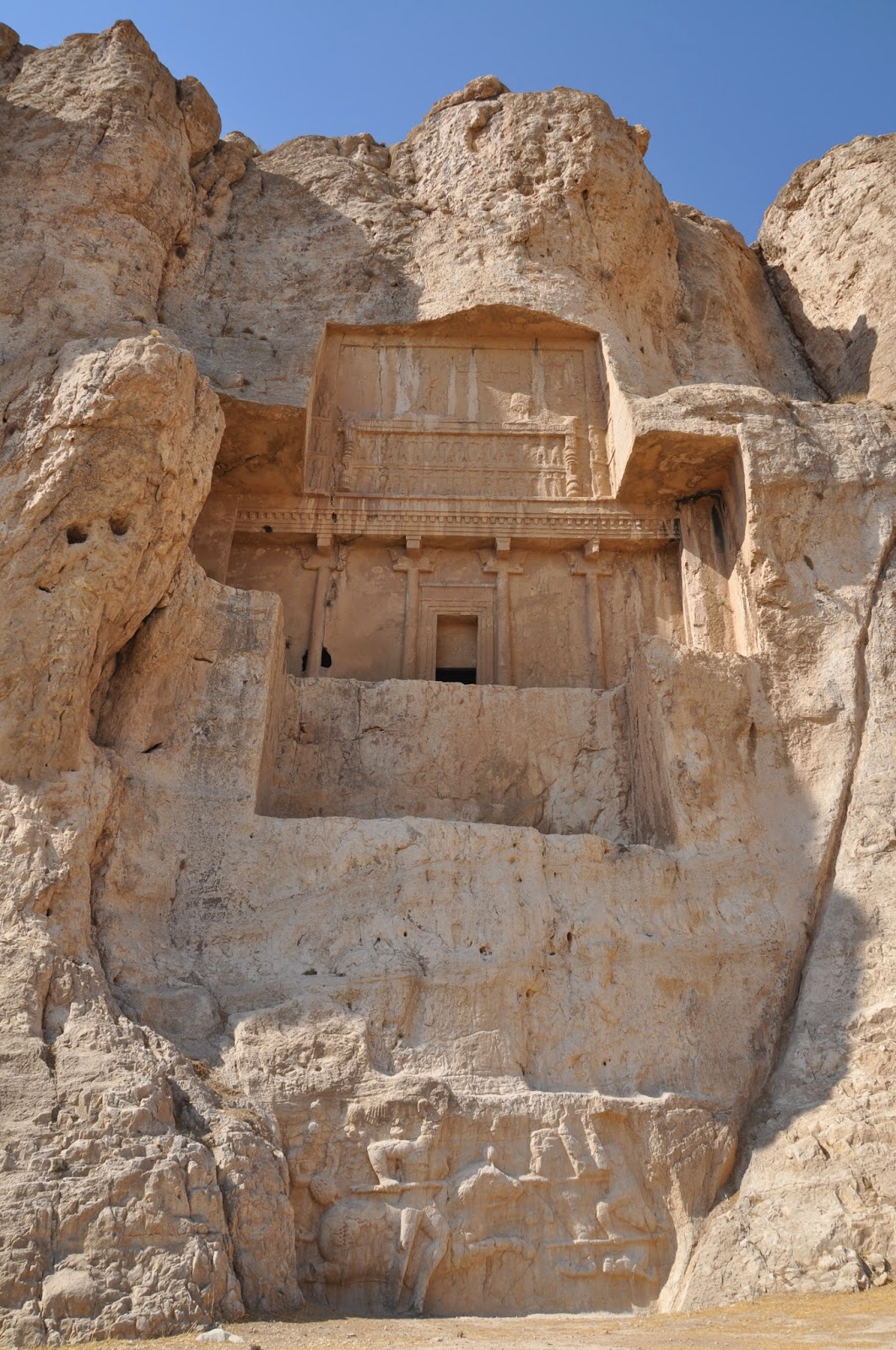(...)
Below the tomb attributed to Artaxerxes I there is a double panel relief, whose upper register is almost destroyed. The lower one depicts Hormozd II (302-309), recognisable by his crown which is shaped as an eagle carrying a pearl in its beak, over a mounted foe. Narse (his son) is represented on horseback charging at full gallop with a long lance against an enemy, who wears a plumed helmet adorned with the family insignia of Papak (the governor of Georgia). Behind the king one can see his standard bearer carrying a banner consisting of a lance topped by a horizontal bar.
Underneath the tomb attributed to Darius II there is a carved equestrian combat showing a horseman wearing a crown, which seems crenelated and thus similar to that of Shapur II (309-79) charging against a horseman clad in mailed armour wearing a plumed Roman helmet. The foe is reeling under and his horse is falling backwards. A standard bearer can be seen carrying the banner of the king.
Carved on the lower right side underneath the tomb of Darius the great, the stone carved relief shows the investiture of Nerse, the youngest son of Shapur I, by a female crowned figure, while a grandee anda prince seem to look on. The king wears a majestic crown consisting of the old Persian fluted hat surmounted by a huge globe and tied with a diadem, whose ends fall in long wavy curls over his shoulders. The King's garment and trousers are pleated and his shoes have biribbon laces. The female figure wears a crenellated crown, long braided hair, ear-rings and a necklace. Her magnificently pleated dress is belted around the waist. She is offering a diadem ring to Narse, while keeping her left hand side hidden under her sleeve (a gesture, which traditionally indicated obedience). There are some doubts as to whether she is Anahita, the Goddess of fertility or Shapurdokhatek, Narse's wife because of the gesture of reverance indicated by the raised hand and the bent forefinger.
The half-submerged cube building with one entrance and no windows standing 12,6 metres high, which was to be seen in front of the tomb of Darius the Great was probably inspired by the earlier Urartian architecture and is said to be clearly Achaemenid. Although its function is still a mystery it is thought to have held royal archives or royal battle standards, despite the fact that it might have also been used as a mortuary chamber.
I felt that having an archeologist and Art History master as a guide helped us in identifying certain traits and particularities pertaining to the various dynasties being "portrayed" and provided us with an insight into the complexities of what we were being shown.
(To be continued)















No comments:
Post a Comment